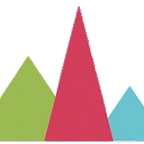How to create effective data stories?
Telling stories is part of our routine, and every day we tell stories, at home, at school, at the university, in the park, even at work; and I, especially, tell them at work, but with data. Today, my mission is to tell you about the power of data visualization when it comes to telling effective data stories.
Let’s start by determining that telling stories and stories with data is the same, and you may be wondering why this statement. It happens that these two types of stories follow the same starting points and the same execution; in both cases, we will have primary and secondary characters, a plot, a narrative sequence, a time and space where the events happen. However, you may be wondering how we can create characters with data or create a dialogue with numbers?
We will answer these questions by determining three key aspects that allow us to tell data stories and make them useful. When we talk about effectiveness, we refer to that precise moment when you share your dashboard, and the message is captured in its entirety when there is no need to explain what you have just created; otherwise, something must be review.
Problem, solution, and inputs are the three factors responsible for helping us to tell effective stories.
1- The problem: Albert Einstein is credited with the following sentence “If I had only one hour to save the world, I would spend 55 minutes defining the problem.” He could not be more right; the essential phase in any action to does execute, even those that do not have to do with data visualizations, is to define your problem statement and take those 55 minutes of the hour to determine:
- The intention of my problem or story
- The importance of my problem or story
- Is it possible to solve my problem or story?
Always be clear about what questions or needs are resolving to create a route or guide to executing. When we are clear about the final goal, achieving it can be a matter of 5 minutes, as Albert Einstein said.
2- Inputs: when we refer to inputs, we are talking about the dialogue or the data; it is that toolbox that we give our characters to tell the story. In this phase, we decide which data are indicated to respond to this initially raised problem.
3- The solution: the characters and the action plan enter; in this phase, we must ask ourselves, what does a successful solution look like? To answer this question, we must resort to the term “ghost deck” where the objective is to divide my statement of the problem into different hypotheses that allow me to devise the most appropriate solution.
When we manage to unite these three aspects in one place, like a dashboard, the narrative acquires more power than the raw information. It generates more impact on the emotions and memory of each human being. A significant data story enables you to communicate insights that influence decisions, impact lives, inspire action, and motivate change.
Bringing data to life is one of the many benefits of telling stories with data. It even creates the opportunity to create awareness from evidence and visual media on issues that affect us all and should concern us all. A clear example of this is the environmental impact that humans have caused on earth, and some argue that climate changes, such as global warming of 1.4 degrees Fahrenheit from 1880 to 2015, are due to natural causes.
However, how true is that statement? The journalist Eric Roston created a visualization where he turns this question into a story visualized by line graphs that detail the change over time of each of the different factors, both natural and industrial, that contribute to global warming.
This visualization allows us to see how temperatures are increasing each year. However, unlike wars, diseases, and other global events, it is not easy to convert this evidence into consciousness where people can understand the significant impact that we generate on the planet. However, visualizations such as These generate the possibility of interacting directly with climate change and observing how our world warms before our eyes.
